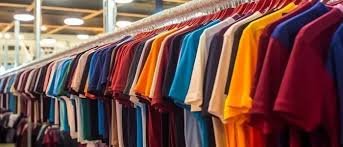Over the last decade, vintage fashion has transformed from a niche collector’s market into a global phenomenon. Whether it’s a thrift store shopper hunting for a one-of-a-kind denim jacket or a boutique curating rare 80s streetwear, the demand for retro pieces is soaring.
For business owners, bulk vintage wholesale offers a golden opportunity: buying authentic, high-quality items at scale and reselling them for profit. But sourcing the real deal at the right price isn’t as simple as it sounds.
In this guide, we’ll break down exactly how to find reliable suppliers, identify genuine retro clothing, negotiate prices, and ensure your purchases are profitable — all while staying ahead in the competitive apparel wholesale industry.
Understanding Bulk Vintage Wholesale
Before diving into sourcing strategies, it’s important to define the market. Bulk vintage wholesale refers to purchasing pre-owned clothing, shoes, or accessories — typically from past decades — in large quantities at discounted rates.
These items can come from:
-
Liquidated store stock
-
Charity shops and donation centers
-
Warehouse collections from vintage dealers
-
Private sellers offloading curated collections
Key difference: In standard apparel wholesale, you’re usually buying brand-new, current-season items from manufacturers. In vintage wholesale, you’re sourcing pre-loved pieces that carry unique character, history, and style.
Why Businesses Love Vintage Wholesale
-
High-Profit Margins – A vintage Levi’s jacket bought for $15 in bulk can easily sell for $60–$120 retail.
-
Sustainability Appeal – Consumers are increasingly drawn to eco-friendly, second-hand fashion.
-
Trend Cycles – Styles from the 70s, 80s, and 90s keep coming back into fashion, ensuring ongoing demand.
-
Unique Inventory – Unlike fast fashion, no two vintage pieces are exactly the same.
How to Identify Authentic Vintage Pieces
Buying in bulk means you won’t examine every single garment before purchase, but you still need to know the signs of authenticity.
Here are quick checks you can make when sampling stock:
1. Labels & Tags
-
Vintage tags are often stitched rather than printed.
-
Look for old brand logos, country-of-origin labels (e.g., “Made in USA”), and dated care instructions.
2. Construction & Materials
-
Older garments often use heavier fabrics and sturdier stitching.
-
Zippers may be metal rather than plastic.
3. Signs of Age
-
Faded colors, wear on hems, and slight fabric patina can indicate genuine age — as long as it’s not damage that lowers resale value.
Finding Reliable Vintage Wholesale Suppliers
The difference between turning a profit and getting stuck with unsellable stock often comes down to your supplier.
1. Specialized Vintage Wholesalers
Look for suppliers that deal exclusively in vintage clothing, not general second-hand goods. Many operate warehouses where you can handpick your pieces.
2. Trade Shows & Apparel Wholesale Events
Fashion and vintage trade fairs give you direct access to suppliers, allowing you to inspect quality before committing to large orders.
3. Online Marketplaces
B2B platforms like Alibaba, B2B vintage websites, or even eBay bulk listings can be starting points — but always request detailed photos and references.
4. Local Thrift Store Relationships
Some vintage sellers build partnerships with local thrift stores to get first access to incoming high-value donations.
Negotiating the Best Prices
Your profit depends on the gap between buying and selling price, so strong negotiation skills are essential.
-
Buy More, Pay Less – The larger the order, the more room there is for discounts.
-
Build Long-Term Relationships – Repeat buyers often get first access to premium stock.
-
Seasonal Timing – Purchase summer items in winter and vice versa for better deals.
-
Ask for Mixed Lots – Suppliers may give better prices when clearing mixed inventory rather than curated batches.
Shipping & Import Considerations
If you’re sourcing from overseas:
-
Check import duties and taxes for your country.
-
Factor in shipping costs to avoid eroding your margins.
-
Ask suppliers about compression packing to reduce volume and freight fees.
Maximizing Profit When Reselling
Once your bulk order arrives, how you prepare, market, and price your stock determines your return.
1. Clean & Repair
Even a small stain or missing button can turn away a buyer. Simple repairs can significantly increase resale value.
2. High-Quality Photography
Showcase each item’s unique features. Vintage shoppers often buy based on specific details.
3. Targeted Marketing
Use platforms like Instagram, Etsy, or Depop to reach fashion-conscious buyers who value originality.
4. Diversify Channels
Don’t just rely on one sales outlet. Mix online selling with in-store racks, pop-up events, or flea markets.
Common Mistakes to Avoid
-
Overbuying Damaged Stock – Bulk lots can hide items beyond repair.
-
Ignoring Market Trends – Just because an item is old doesn’t mean it’s in demand.
-
Not Understanding Your Audience – The style preferences of your target buyers should guide your purchasing decisions.
Sustainability and Storytelling
Today’s shoppers love to know the story behind their purchase. Highlight the eco-friendly aspect of vintage clothing and share the history of certain brands or styles.
By combining sustainability with compelling storytelling, you can build customer loyalty and stand out in a crowded apparel wholesale market.
Conclusion
Succeeding in bulk vintage wholesale isn’t just about buying old clothes in bulk — it’s about sourcing authentic retro pieces, negotiating fair prices, and knowing how to market them to the right audience.
By understanding the market, building strong supplier relationships, and keeping an eye on fashion trends, you can turn vintage sourcing into a profitable and sustainable business.







